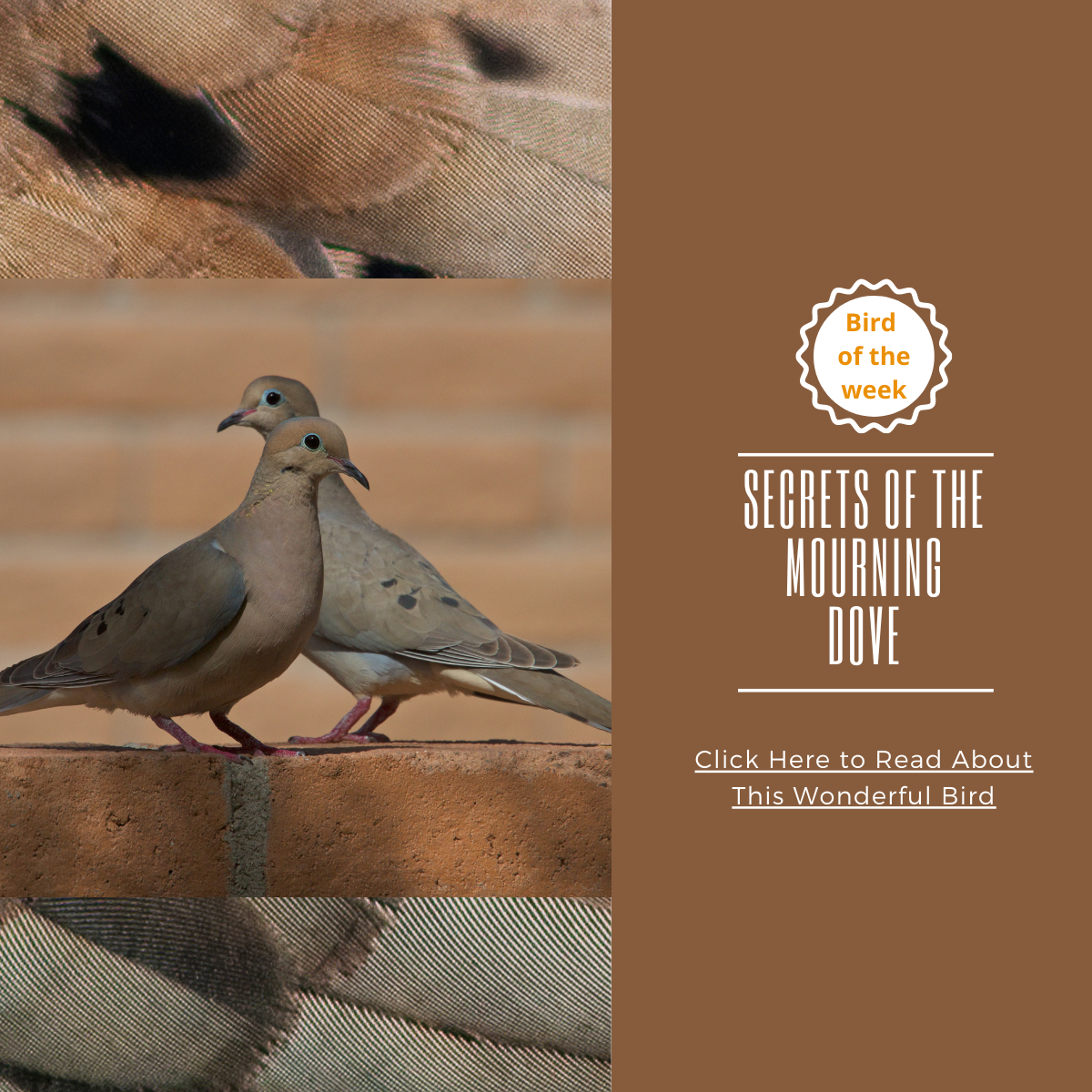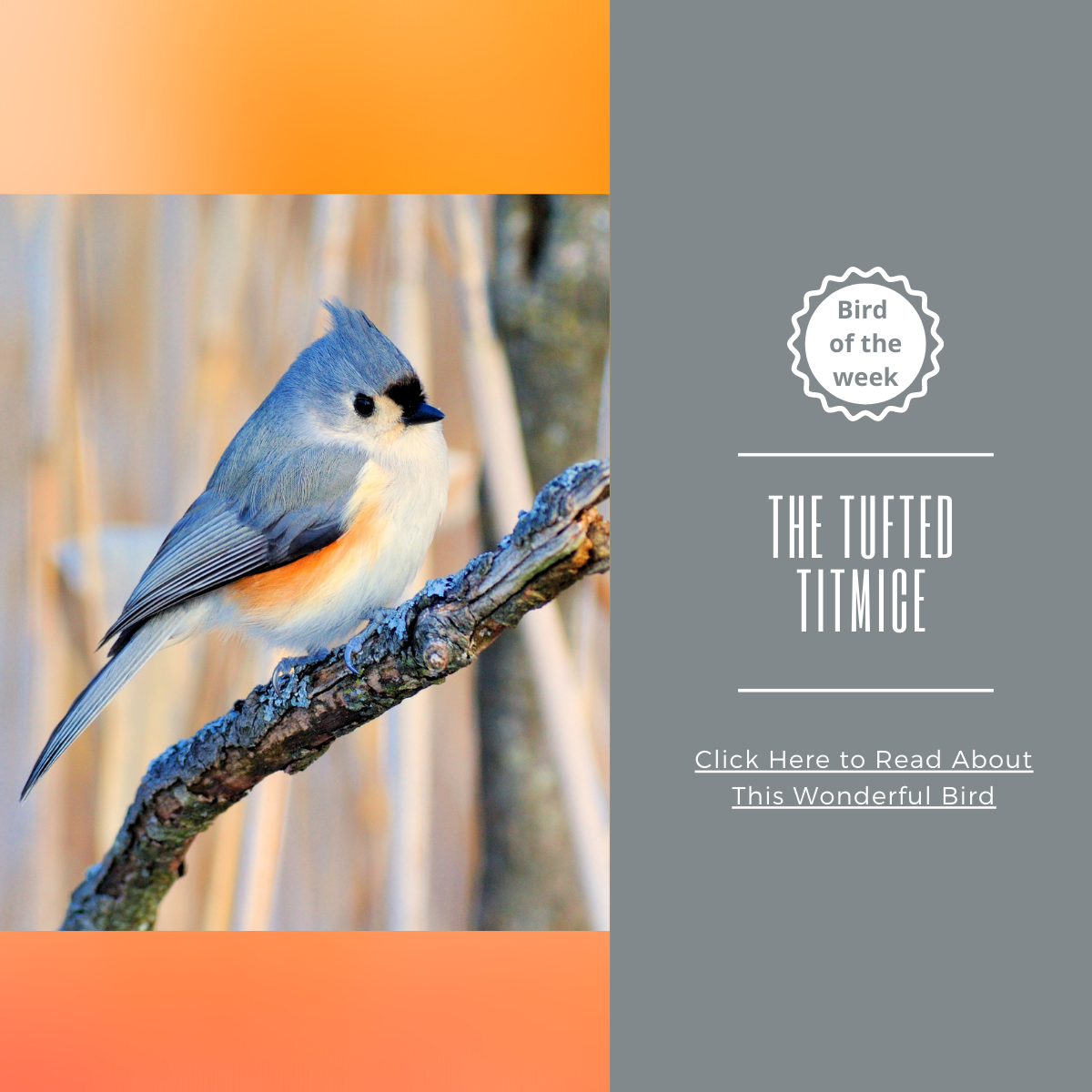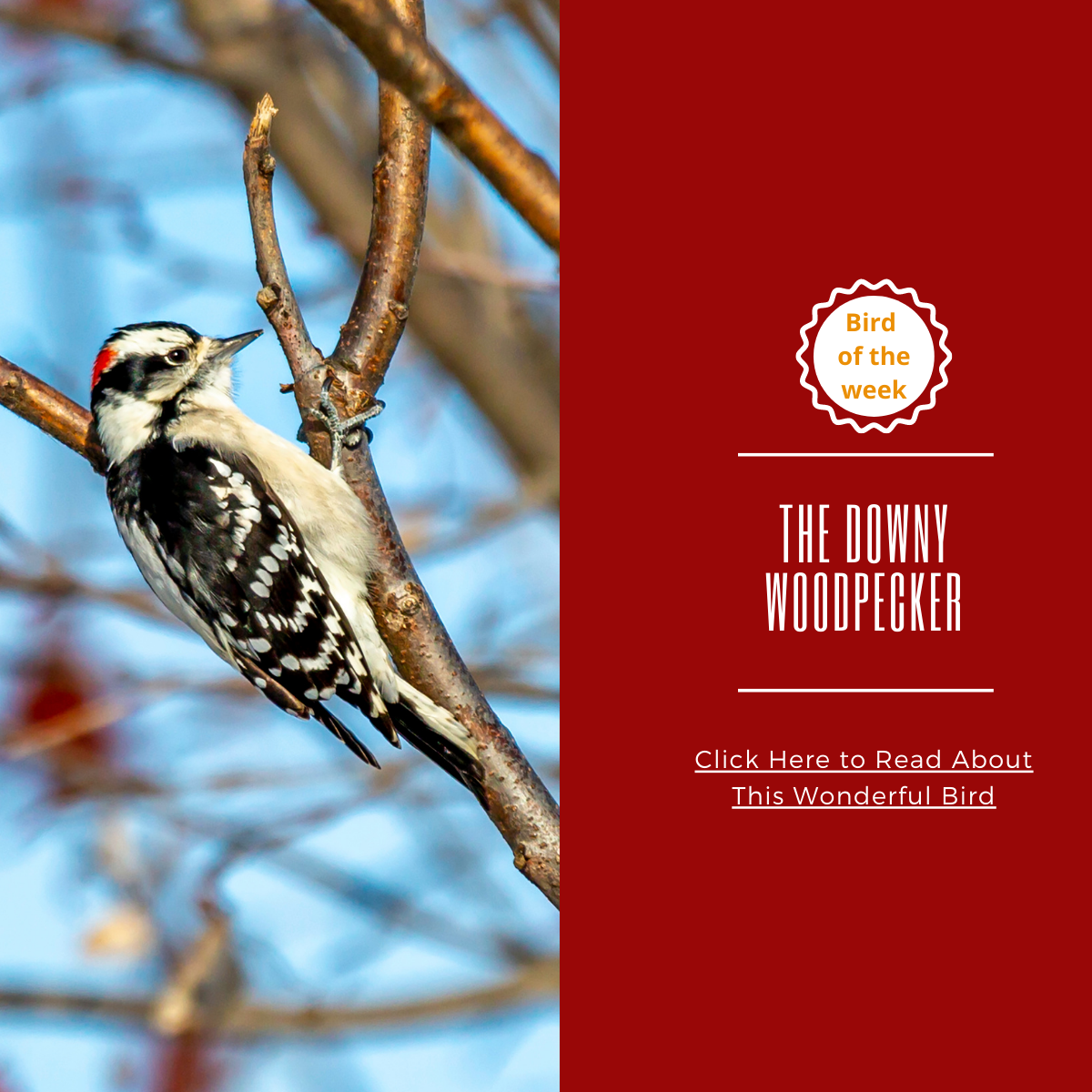
From Canada to Mexico, the most common sighting in the northern US is the mourning dove. Perched on telephone poles, cooing as if lamenting, most don’t give them a second thought.
But there is more to them than meets the eye in this elegant bird. Their feeding and mating are extremely unique, their sound - warm and soothing.
They cut the air like a knife when flying, reaching up to 55 mph due to their pointed wings and long slender tails!
Mourning doves are the most hunted bird in the US. Somehow, they manage to stay abundant with more than 350 million of them in the US alone!
In case you missed last week's bird-of-the-week: The Tufted-titmice
Looks aren’t everything.
Mourning doves have distinctive plump bodies compared with their small heads, small bills and short legs. Their slender tails are most unique among North American doves.
So if you see a silhouette of a small head, large body and long slender tail - no question - that’s a mourning dove.
And how about no neck? Well, wait until something gets their attention! Their neck shoots up like a spring!
Check out what happens to this guy's neck at the start of the clip:
Their soft brown overall look has more than meets the eye. Notice the black spots on the wings and black-bordered white tips to the tail feathers.
Their backs are greyish or brown and their under parts are creamy buff-coloured, decorated with pink or iridescent purple spots. And they never forget their makeup: blue rings around their eyes.
Mourning doves have a mortality rate of 50%, young adults even higher - 60-75%. Most songbirds have a very small chance of making it, due to predators and the weather.
For doves, specifically because they are ground feeders, cats are their enemy, as well as hawks, falcons, racoons, opossums, crows and grackles - making their average life span around 4-5 years. For younger birds it’s 1-1.5 years.
Sadly, the oldest living mourning dove reached the esteemed age of 30 and 4 months (!) (banded in 1968) when he was shot down. One wonders what age he would have reached if it were not for that trigger-happy shooter.
Mourning doves are not migratory per se. The doves in the north may travel slightly southward, and those in mid-America and southward stay put. However, if there are bird feeders, the doves might consider staying the season. So get your bird feeders ready!
What kind of bird feeders do mourning doves like?
Mourning doves are ground feeders but their bird feeder of choice is actually a platform or tray feeder. This is because though they forage on the ground, they don’t eat and digest the food until they reach greater heights.
Mourning Doves are sometimes seen on smaller feeders but as it is uncomfortable for them to perch on, they usually don’t stay there long.
It’s best to place your bird feeder where it is covered with shrubbery to offer them a feeling of protection.
What do mourning doves eat?
Mourning doves sustain themselves mainly with field grains such as corn, wheat, grass and ragweed seeds. (there’s some free weeding in the garden for you!) Sometimes even snails, and very rarely - insects.
But to get these lovely cooers to your bird feeder, give them some white and red proso millet, oil-type sunflower seeds and cracked corn. That should do the trick. What better sound to wake up in the morning to if not a good coo.
The sound of dove music
The coooo-wooo-woo sound is usually heard from the male adults as they - woo - yes, that’s where the word comes from - their potential mating female.
Doves don't open their beaks when they coo their mournful sounds. They puff their chest up as if filling a balloon in their gullet and send vibrations to their skin which makes that sweet sound.
However, the melody changes when attacking or being attacked. Interestingly, it’s mainly the wind vibrating through their wings that makes that cacophonous flitting sound, a sound sent to anyone threatening their safety.
Look at this great close up of a cooing dove:
Dove Love
Mourning doves start mating in March. That early. They mate for the season and sometimes for a few seasons after that!
When the male dove spots his dame of choice, he shoots up with his loud and boisterous wingbeats and glides around in circles with his wings at full spread, head slightly hunched. When the courting happens on ground, the male puffs his chest up then humbly bows while singing his courtship coo-song.
Once mated, the pairs preen each other's feathers. Lots of work ahead: Building nests!
Not ones for putting much artisanship into their nests, mourning doves loosely pull together a bunch of sticks, pine needles, weeds, all balanced on branches or ledges, they’ll even go for a cactus if they need to. They don’t fear humans, so you’ll see them from their nests in unusual places, with no regard to their proximity to you. It takes them only 2-4 days to complete the nest, usually built 5-25 feet off the ground.
Note to us: Best not to get too close to the nest during incubation. This might frighten the doves and cause them to fly the nest, letting the eggs fall down and crack. Sadly, other reasons can make a dove feel unsafe, fear of predators for example. They just might fly away, abandoning their eggs all together.
The mom will lay two plain white eggs, and the monogamous male and female birds will take turns during incubation. Sometimes it seems the birds never leave the nest! That’s because we don’t notice the similar sexes changing shifts.
Did you know that a newly hatched dove is called a squab?

4-5 days after hatching, the parents continue to incubate the little ones. You won’t even notice that they have come into the world until day 6 or 7. By then, the parents will start leaving their squabs alone and only brood at night. Two weeks after being born, the young’uns are all ready to leave the nest! Baby mourning doves are pushed from the nest by their parents when they're about 2 weeks old. The parents will continue to feed them on the ground until the babies are weaned at about 4 weeks old.
The female can then go ahead and press “copy paste” as she can lay a new clutch every 30 days! The adults will use the same nest and create 5 or 6 more broods each season!
Milk for my baby!
Mourning doves, as well as pigeons, produce what's known as “pigeon milk”. It is rich in protein and fat and looks like cottage cheese. It is regurgitated to the little ones for the first few days of their lives. The parent lets the squab push its head into its crop, an enlarged part of their esophagus, to drink the milk (not really milk, but bird milk) After a few days, the parents replace the milk-feeding by giving them regurgitated seeds for a month or so.
Mourning Dove feeding young squabs:
FUN FACTS:
~Symbolism
In some cultures, the mourning dove stands for new beginnings, happy expectations and as a messenger of hope.
~From the ground up
When you see doves pecking crumbs off the ground, they may not be eating them immediately but are storing them in their crop to be digested later.
~Waterworks
Doves spread their wings to cool off and flatten them to let the rain drops slip off.
~Like dog, like dove
Mourning Doves pant just like a dog to cool off when hot. As a result, they have to drink a lot of water to counter the evaporation.





19 comments
Sandra lugo
I have mourning doves every year. They come to the same place to build their nest (a large hanging planter with a few plants. Room for their nest) I follow them from the time they are building their and then watch while the baby’s get old enough to fly away. I get sad to see them go but for the last 4 years they have come back. Take pics every year and date the. I just love them!!!!
Al Mc Derment
It’s a free world to write what ever you want but don’t put down sportsmen or sportswomen that like to hunt upland game bird. We eat everything we put down and we are not trigger happy hunters. We follow hunting regulations and it’s a known fact that we put more into conservation than any other group in the USA
Al Mc Derment
It’s a free would to write what ever you want but don’t put down sportsmen or sportswomen that like to hunt upland game bird. We eat everything we put down and we are not trigger happy hunters. We follow hunting regulations and it’s a known fact that we put more into conservation than any other group in the USA
Al Mc Derment
It’s a free would to write what ever you want but don’t put down sportsmen or sportswomen that like to hunt upland game bird. We eat everything we put down and we are not trigger happy hunters. We follow hunting regulations and it’s a known fact that we put more into conservation than any other group in the USA
Bonnie steinkraus
Love your site. Wonderful video and sharing such valuable infornation
Leave a comment
All comments are moderated before being published.
This site is protected by hCaptcha and the hCaptcha Privacy Policy and Terms of Service apply.